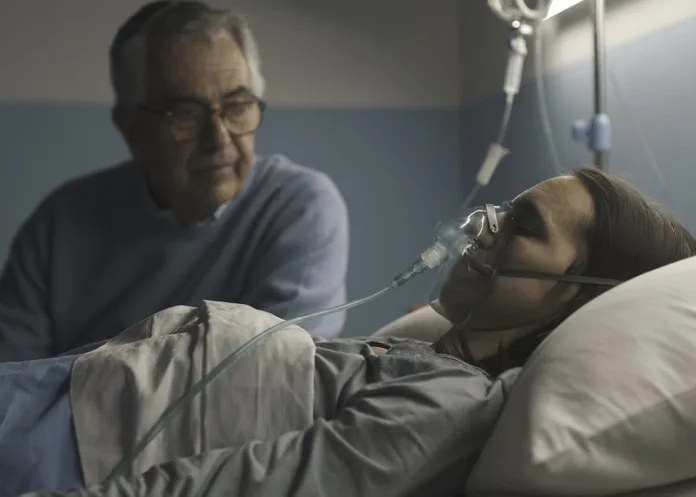An updated set of guidelines to determine brain death was released in the US this week, the first amended recommendations in more than a decade for adult and paediatric patients.
The consensus practice guideline on brain death, also known as death by neurologic criteria (BD/DNC), was developed by a panel of 20 experts from different specialties, institutions and medical societies.
The updated version stipulates that brain death should be declared when a patient with a known cause of catastrophic brain injury has permanent loss of function of the brain, including the brainstem, which results in coma, brainstem areflexia and apnoea in the setting of an adequate stimulus.
But it also clarifies questions on neurological examinations and apnoea testing, and offers new guidance on pre-evaluation targets for blood pressure and body temperature and evaluating brain death in patients who are pregnant, are on extracorporeal membrane oxygenation, or have an injury to the base of the brain.
Also, for the first time, the guidance clarifies that clinicians don’t need to obtain consent before performing a brain death evaluation, unless institutional policy, state laws, or regulations stipulate otherwise.
“These 2023 guidelines will be considered the standard of care in the US,” lead author Dr David Greer, chair and chief of neurology, Boston University School of Medicine, and chief of neurology, Boston Medical Centre, told Medscape Medical News.
The guidelines were published online in Neurology.
Four years’ work
Work on the 85 recommendations in the new report began more than four years ago as a collaborative effort by the American Academy of Neurology (AAN), the American Academy of Paediatrics (AAP), the Child Neurology Society (CNS) and the Society of Critical Care Medicine (SCCM).
A lack of high-quality evidence on brain death determination led the panel to devise an evidence-informed formal consensus process to develop the guidelines, involving three rounds of anonymous voting on each recommendation and the rationales behind them.
They replace adult practice guidance published by AAN in 2010 and guidelines for infants and children released in 2011 by AAP, CNS and SCCM, and for the first time, combine brain death guidelines for adult and paediatric patients into one document.
“This is a step toward having a set of guidelines that are accepted by most of the societies and clinical specialties involved in this sort of diagnosis, and which could lead to a national-level policy,” said Dr Fernando Goldenberg, professor of neurology and director of Neuroscience Critical Care, University of Chicago Medicine.
Goldenberg was not part of the panel that developed the updated guidelines, but was a co-author of a consensus statement from the World Brain Death Project in 2020.
He said policies vary widely across the world, and some countries don’t even recognise brain death.
Permanent vs irreversible
Goldenberg added that combining adult and paediatric guidelines into one document would be very helpful for clinicians like him who treat patients from 16-years-old and up.
He noted that the section on credentialling and training of clinicians who perform BD/DNC evaluations recognised advanced practice providers, the first time he recalled seeing these professionals included in brain death guidelines.
However, the panel’s decision to use the term “permanent” to describe loss of brain function instead of “irreversible” gave Goldenberg pause.
The UDDA provides that an individual is declared legally dead when “circulatory and respiratory functions irreversibly stop; or all functions of the entire brain, including the brain stem, irreversibly stop”.
Earlier this month, the American College of Physicians (ACP) released a position paper on cardiorespiratory death determination that called for a revision of the UDDA language.
The ACP suggests that “irreversibly” be replaced with “permanently” with regard to the cessation of circulatory and respiratory functions, but that “irreversible” be kept in the description of brain death.
“Permanent means there is damage that is potentially reversible and irreversible means the damage is so profound, it cannot be reversed even if an attempt to do so is performed,” Goldenberg said.
Even though the World Brain Death Project, on which he worked, also used “permanent” to describe brain function loss, Goldenberg said he aligns with ACP’s position.
“The understanding of brain death is that the damage is so profound, it is irreversible, even if you were to try,” he said.
“Therefore, I think that the most appropriate term for brain death should be irreversible as opposed to permanent.”
brain dead guidelines
Medscape article – New Guidelines for Determining Brain Death Released (Open access)
See more from MedicalBrief archives:
UK judge to decide on ending baby’s life support
What can we learn from the tragedy of Archie Battersbee’s death?
Lab study raises intriguing questions about the ‘irreversibility of death’
US team ‘jump-starts’ two people’s brains after long-term coma

